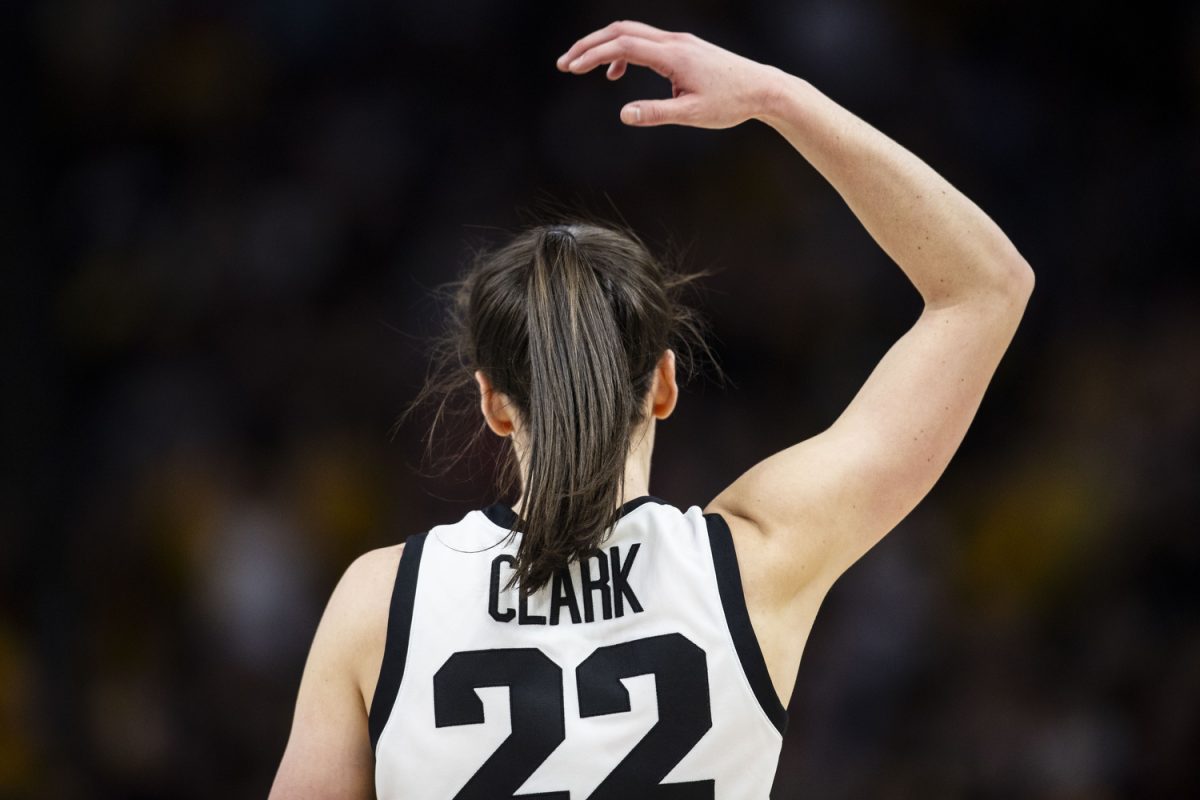It can be called “penalty corner,” “short corner,” or simply “corner.” However, they all refer to the same thing — a huge advantage for the offensive team.
“To most people, I say it’s like a power play in ice hockey,” Iowa junior Dani Hemeon said.
Hemeon’s comparison to the man-advantage on the ice is a good place to start, but let’s dig deeper into the opportunity on the pitch.
A penalty corner can be awarded to the offensive team on a few offences committed by the defense, but the most common grounds are when a defender commits a foul inside the shooting circle.
When the ruling is called, the defensive team may only have four position players and the goalkeeper on its side of the midline. All five must be inside the net and have their feet behind the goal line before the ball is passed in. Once it enters the field of play, those five and their remaining teammates may rush to defend the attack.
When the Hawkeyes are defending a penalty corner, Hemeon will don a clear plastic mask and join four of her teammates, along with goalkeeper Kelsey Boyce, to try to keep the ball from entering their net. Hemeon stated any defender’s goal is to mark up every attacker as quickly as possible.
To combat the defenders, a member of the offensive team takes the ball at a hash mark 10 yards from the side of the goal and passes it in to one of her teammates standing at various positions around the circle, which sits 16 yards from the goal. The No. 10 Hawkeyes usually position six players around the arc, although that number may vary depending on the opponent.
For Iowa (4-2), the student-athlete that inserts the ball into play more times than not is Niki Schultheis. The senior says one of the keys to executing a successful penalty corner is getting the ball in as quickly as possible.
“Because all the other people from the other team have to come back from the 50-yard line, the quicker you execute it, the longer you’re going to be up numbers,” the native of Hamburg, Germany, said.
Usually, Schultheis sends the ball into the trapper, who stops the white sphere and then passes it to a teammate who either fakes or puts the ball on goal. However, occasionally the senior will pass it to Hemeon, who will stop it on her own and unleash a shot on net. The Hawks have been successful running that play two times this season — resulting in a Hemeon score.
Head coach Tracey Griesbaum said the Schultheis to Hemeon play and others like it are called based off of the team’s performance in practice. She stated that the team tweaks plays to try to find different ways to be successful on the pitch.
Before each game, the student-athletes pick two plays to run and the coaching staff picks others and calls which is run in each situation. Even though Griesbaum calls the plays, she said player feedback is vital to success.
“We can watch from [the sideline], but this is our angle,” she said. “Their angle is right in it.”






